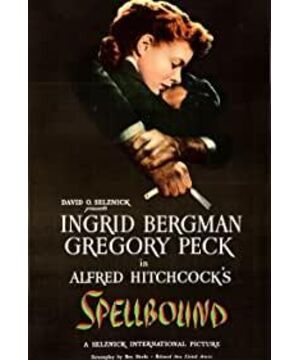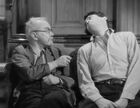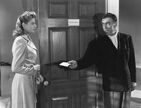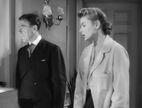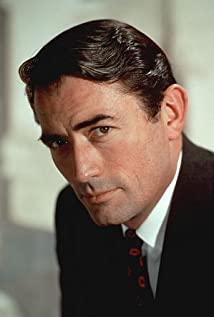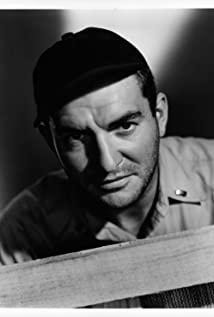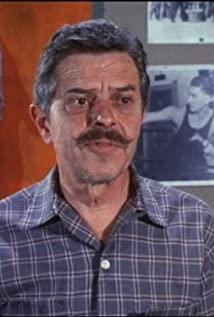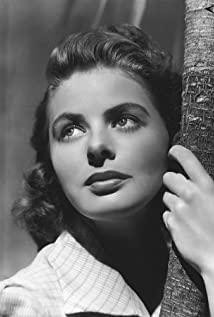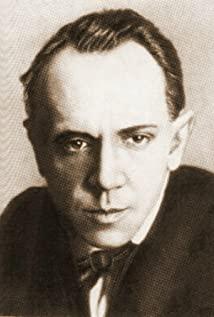Master Hitchcock's classic movies are always amazing. As a model for psychoanalytic films, "Dr. Edward" shows us the absurdity of dreams and the hypocrisy and cruelty of reality. Combined with psychoanalysis, we gradually get closer to the reality from reality to dream, and let us feel the great influence of human subconsciousness on life and the sinister nature of human nature. Although the story of the film is very simple, the plot is full of logic, and we can never predict the ending until the last moment, just like a dream, at a loss. The scene at the beginning of the film is a psychiatric hospital, the old director is about to retire, and the new director, Dr. Edward, is about to take office. From the beginning of the film, we can learn that, as the only female doctor in the mental hospital, Peterson, many people have some ideas about her, including the dean, patients, and other medical staff, and Peterson can be said to be in "estrus" ”, she had a good relationship among these people, and she also had an affair with the dean, all of which was not until “Dr. Edward” came. The director emphasized the tall and handsome image of "Dr. Edward". At the same time, he filmed the female doctor Peterson in some details, which meant to reflect the psychology of the female doctor at the moment: she slowly fell in love with "Dr. Edward". This is a kind of sexual instinct. After encountering a younger and more energetic man than the dean, the female doctor naturally revealed her true "self" emotion and gave up the dean without hesitation. Echoes. Freud's "Interpretation of Dreams" mentioned that the sexual instinct is an instinct in a special position, which is of great significance to the growth of personality, human psychology and behavior. Even if the instinct is the power source of unconscious activity, then the sexual instinct is the core of this source. It is not difficult to explain that the female doctor steadfastly helped "Dr. Edward" when he was called a murderer. In the subconscious, sex occupies a large part, and this sexual consciousness comes partly from love and partly from psychological instinct. The black and white stripes in the film serve as the clues of this suspenseful film, running through the whole, from when the fake Edward and Peterson ate at the dinner table for the first time, to finally revealing the mystery of the black and white stripes: the traces of the snow sled, which became the consciousness of the fake Edward The line of defense and shackles made him lose himself and forget what happened. We will see later that the black and white stripes are actually the most painful and least reminiscent things in his heart. Although this is his unintentional move, in his subconscious, he has closed his "self" consciousness, so he has a huge reaction to seeing the black and white stripes, which is called stress disorder in psychology. As the heroine of the film, Peterson takes on the responsibility of letting the fake Edward out of his psychological shadow, which just reflects her role as a doctor. responsibility, but only based on her sex with the fake Edward. For the other poor people in the mental hospital, she is far from being equal. This is also her kind of selfishness guided by sex. When Peterson went to help the fake Edward escape, she was sexually harassed by a man while sitting on a station bench. This kind of ambiguous and sexual harassment exists throughout the film, including Peterson's escape to the professor of psychoanalysis later. It illustrates the importance of sexuality, which the film wants to express implicitly, in the interaction between men and women. Psychoanalytic theory has both an obvious signifier interpretation and a symbolic signified connotation in this film. The old dean held a positive attitude towards the fact that the fake Edward was a murderer, and used psychoanalysis to prove his point of view, not only because his position was about to retire, but subconsciously he held the same-sex fake Edward. There is hostility, and the fake Edward who is in love with Peterson is regarded as an imaginary enemy. The most classic part of the film is the wonderful and unspeakable dream: a casino full of eyes, a man with scissors to cut off the curtains of his eyes, a naked woman pouring juice, a fake Edward playing cards with a man, the casino owner who suppresses cheating, The man under the roof, the boss with the wheel in his hand... With the efforts of the professor of psychoanalysis and Peterson, the fake Edward revealed his dream, which precisely shows that his heart is gradually opening, and he is a part of his "self". process. Dreams are born from the heart, and it is precisely the reflection of reality. Interpreting this absurd dream is also close to the truth of the death of the real Dr. Edward. We often say that the eyes are the windows to the soul, and when scissors cut the eyes, it is also the dust of the soul. The death of Dr. Edward was watched by the fake Edward, and he recalled that he accidentally killed his brother when he was a child. Although it was not unintentional, the guilt of the human instinct in his subconscious made him feel that he killed his brother. So naturally, when Dr. Edward was killed, he also thought that he killed Dr. Edward himself. In the realm of the unconscious, we feel that death is a relief, and because of this guilt, the fake Edward thinks of himself as the dead Doctor Edward, the man who fell off the roof in the dream, can be said to be both Edward and himself. Guilt makes him lose his memory, and the way to retrieve his memory is to break this guilt and reproduce the scene at that time. Just as people with acrophobia need to be treated at a height, only by facing the fear can we overcome fear. With the help of Peterson, they came to the ski resort where the bloody murder occurred, which is also the reason for the black and white stripes that the fake Edward was afraid of before. In this classic scene of skiing, we can't help but admire Hitchcock's directing skills. When he slipped to the bottom of the cliff, the fake Edward rescued Peterson. Subconsciously, He rescued his old brother and the dead Edward, and the knot in his heart was opened. The grievances were cleared, but because there was no evidence, the fake Edward was still locked up. This was also the biggest conflict between dream and reality. Ideology is freed, but reality is still bound. As a "savior", Peterson not only rescues the fake Edward in spirit, but also tries to rescue him from reality. She perfectly interprets this smart, gentle and persevering woman. Through psychoanalysis and psychological induction, she successfully The real murderer, the old dean, confessed all this and forced the old dean to commit suicide. A strong color is drawn for the ending, and it is also the beginning of her new life. In the last scene, the two of them walked into the station and embraced each other at the station entrance. We can imagine this as a kind of "superego" realization of their psychology, or as a happy ending. Can not help but sigh, the master's handwriting is really intriguing.
View more about Spellbound reviews


